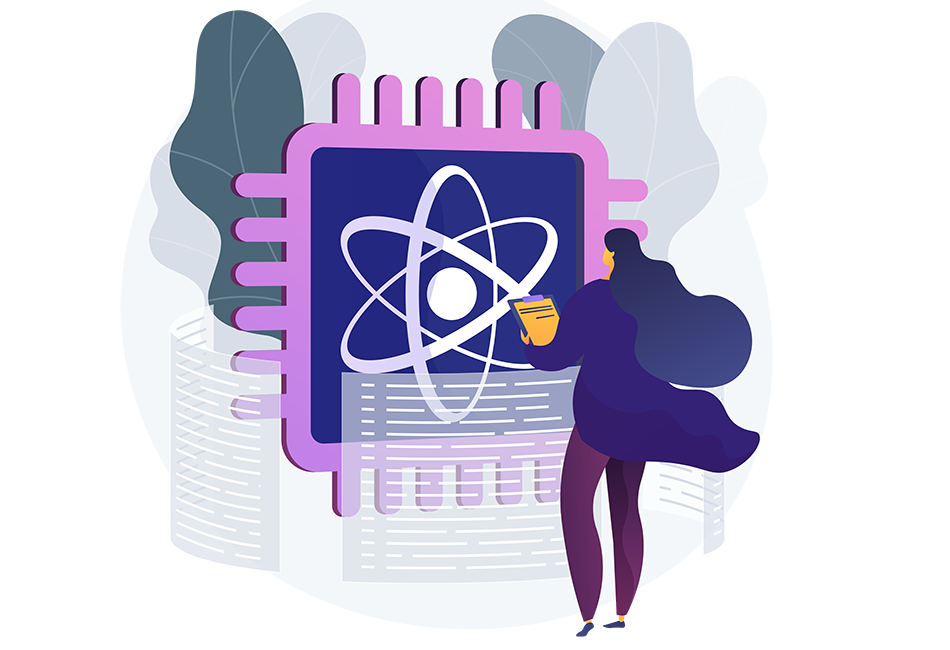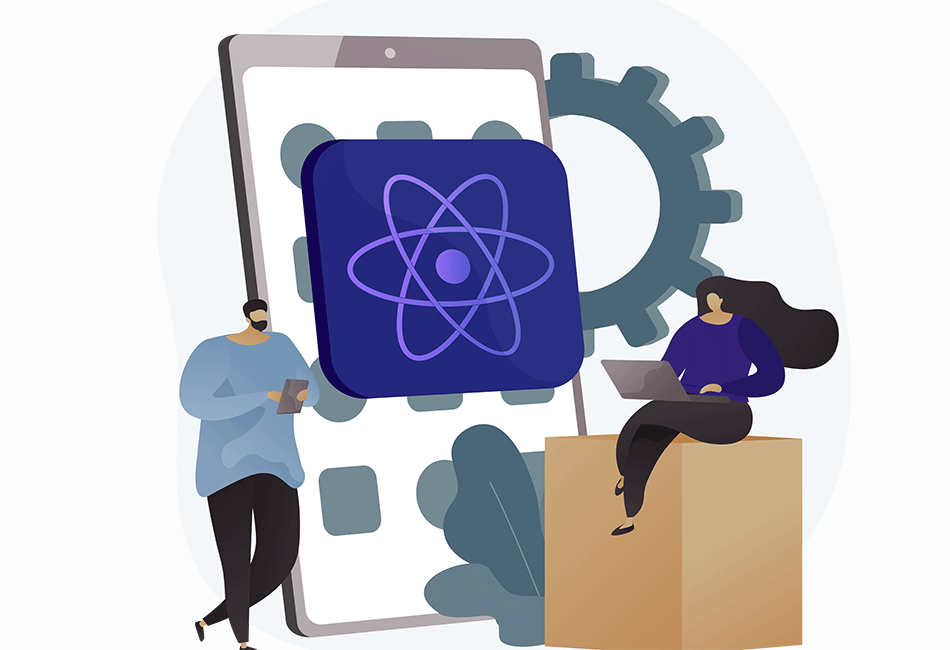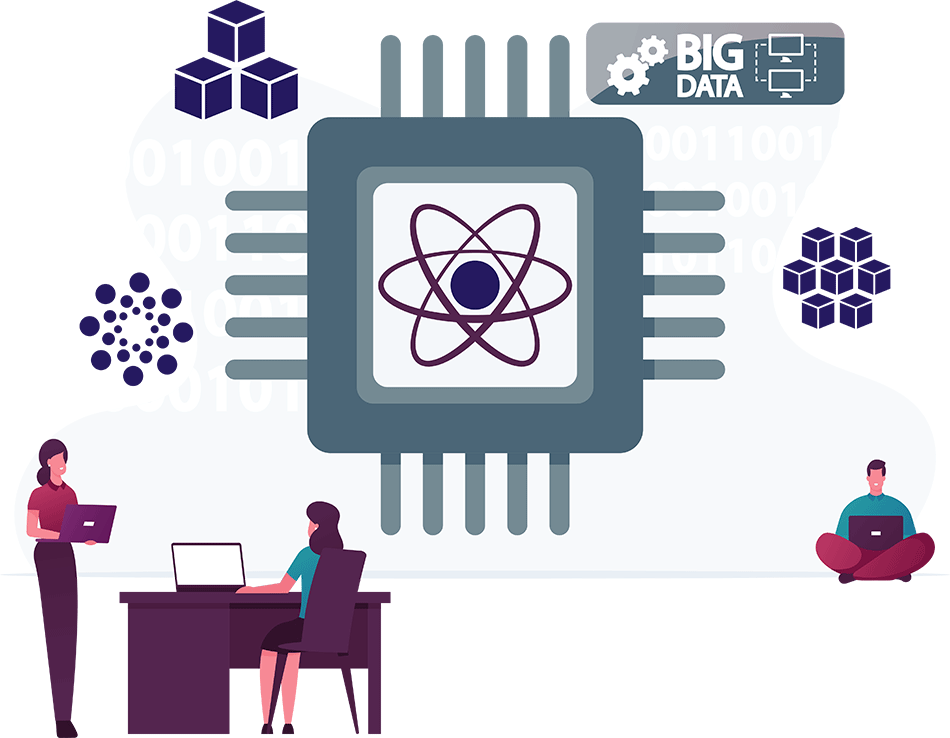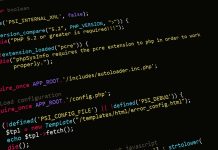By Terence Tse, Mark Esposito, and Tahereh Saheb
If you’ve heard of quantum computing but, amid the hype and hullabaloo of all the other “latest things” in the tech sphere, you’re a little hazy about what the term means and, equally importantly, whether you should be sitting up and taking more notice of it … simply read on!
KEY TAKEAWAYS
- Quantum computing and sensing are emerging technologies that leverage the properties of quantum mechanics to perform tasks that are difficult or impossible with classical computers.
- Quantum computing has the potential to revolutionize fields such as cryptography, optimization, and simulation, while quantum sensing can enable more precise measurements in areas such as healthcare, materials science, and environmental monitoring.
- Despite their potential benefits, quantum technologies are still in the early stages of development and face many challenges, including technical limitations, high costs, and the need for specialized expertise.
History appears to be repeating itself. Several years ago, when artificial intelligence (AI) was just entering our daily business conversations, there was much confusion over what this innovation would – and wouldn’t – accomplish for businesses.
Interest in quantum technology has recently expanded significantly, especially as worldwide competitiveness, particularly between American and Chinese enterprises, has increased. Quantum technologies, like AI back then, seem to be cloaked in mystery, since its three techniques – quantum computing, quantum simulation, and quantum sensing – have followed unique development and commercial deployment routes. While there exists a plethora of publicly available information on quantum technology developments, a brief primer on the nature of the technology, its varied techniques, and business implications is probably useful, if not valuable, to those who want to quickly jump into this subject.
Anything but computing
While it is impossible to explain quantum computing in detail here, an analogy can help with understanding conceptually how it works. Consider getting through a two-dimensional maze. A regular computer has to run one path after another until it gets to the exit. If, for instance, there are 256 possible paths to do that, the computer would have to try each of them in turn. In contrast, a quantum computer can run all 256 paths at once to find the way out. The key is that quantum computing is not only processing information exponentially faster, but also handling a wider set of variables simultaneously.
Quantum technology is believed to make use of physical phenomena that can’t be effectively demonstrated or simulated by simple classical physics. Calculating with qubits in a quantum environment, quantum computing is mainly suited to big or complex tasks such as optimisation, simulation, and analysis of big data with the use of artificial intelligence. Just as there is no real intelligence in the term “AI”, the term “quantum computing” has probably got us off to a confusing start. A common misconception is that quantum computers are essential in order to capture the advantages conferred by quantum physics, rendering “classical” computers obsolete. Yet, at the current stage of development, quantum hardware is very delicate and can only function correctly under very specific conditions. Hence, it will be years before quantum computers can reach commercial scale. This, in turn, means that, in the foreseeable future at least, new quantum computing devices will be working in conjunction with the plumbing system established by conventional machines.
Quantum for business
While the business community is increasingly interested in hearing about new applications of quantum technology in a commercial context, in general there are four areas on which quantum technology is expected to have an impact in the near future:
Encryption
Cybersecurity is probably the most widely discussed potential disruption that quantum would create, as it would threaten the safety of the digital and big data ecosystem of enterprises. The reason: the way quantum computing approaches mathematical problems makes it possible to crack the various forms of encryption that we rely on today. Indeed, as early as 1994, scientists showed that this is doable, provided that the quantum devices are sufficiently powerful. Peter Shor, specifically, demonstrated how simple it would be for a theoretical quantum computer to break many commonly used public-key encryption algorithms, such as RSA and Elliptic Curve Cryptography, currently in use at the individual, commercial, and national levels to safeguard the confidentiality and privacy of sensitive data and information. Even though quantum machines today have yet to bust the encryption techniques currently in use, the threat is getting more real with more powerful quantum computers coming online. Threats to industry-standard cryptographic algorithms will lead to a series of changes to the cybersecurity industry. Concerned cryptographers attempted to create new encryption algorithms, known as post-quantum cryptography, that are impervious to quantum systems and will fortify the protection of customer data, fulfilment of business processes and transactions, and communications. For instance, the US Department of Homeland Security and the Department of Commerce’s National Institute of Standards and Technology have partnered to offer a road map for enterprises to shield themselves from cybersecurity threats raised by quantum computing. Consequently, a new wave of post-quantum encryption algorithms such as lattice-based cryptography, code-based cryptography, and hash-based cryptography emerged. Another response was the development of quantum key distribution, or QKD, in which sender and receiver use quantum methods to establish symmetric keys.
Businesses should also react promptly. One response is to upgrade their compliance strategies and tools with quantum-proof policies and procedures, in order to be able to safeguard private digital processes, data, and transactions. If businesses react wrongly and poorly to cybersecurity risks raised by quantum computing, they risk losing their market advantage and potentially damaging their brand. By spotting flaws in third-party software and hardware and enclosing their proprietary information, quantum computing has the potential to damage intellectual property and the supply chain of enterprises. Given that quantum computing could quickly spot and take advantage of security flaws, nefarious practices may also proliferate. Advanced cyberattacks can be carried out by malicious hackers who take advantage of flaws in encryption algorithms and other security measures.
Simulation
For pharmaceutical companies, lengthy, complex, and expensive drug discovery is often the result of serendipity and luck. Quantum-driven chemical engineering simulation enables scientists to better understand molecular structure and properties, making it easier to select and synthesise the right drug molecules. In fact, simulations also allow them to do so without actually synthesising them. This, in turn, could lower R&D costs and reduce timescales of drug discovery. A quantum computer computes all potential outcomes at once, rather than analysing each one separately. Parallel processing by quantum computing in particular has facilitated the efficient simulation of complex systems.2
Optimisation
The fact that quantum can consider all the possible solutions to a problem to help find the best one makes it uniquely capable of dealing with optimisation problems – maximising revenue or minimising costs – especially when the problems involve a lot of constraints and variables. This has huge business implications, as a range of operations can benefit from optimisation, including supply chain.
The use of optimisation algorithms as a tool for selecting the best solutions or procedures may transform businesses such as the transportation sector or energy systems, which rely on optimisation to measure their performance, such as the optimum location for wind turbines. In financial situations that involve high uncertainties and volatility in the behaviour of assets, prices, profits, and losses, quantum machine learning optimisation algorithms could be used to achieve goals like portfolio optimisation and credit scoring 3.
Sensing
Quantum sensing technology isn’t as mature as quantum cryptography or quantum communications, but their development and utilisation are promising. Quantum sensors, which use quantum mechanics attributes such as quantum entanglement, have increased the precision and accuracy of sensor technologies and methods of measurement, connectivity, and interactions with the environment around us 4. Quantum sensing gathers information at the atomic and individual atom levels with elevated advancements in sensitivity and spatial resolution, enabling the creation of immensely reliable, effectual, and meticulous sensor devices. The higher sensitivity of quantum sensing technologies, coupled with their higher specificity, improved accuracy in information collection, non-invasive nature of imaging, and multi-model imaging features, have redefined the biomedical imaging industry. Quantum sensors can recognise comparatively tiny variations in physical or chemical characteristics and distinguish between strongly linked molecules or signals, growing their specificity and sensitivity. Quantum convolutional neural networks (QCNN) can be employed in other industries, such as transportation, defence, and sustainability, by boosting the behaviour of training data. Quantum sensing in the skies, below the seas, or on the road can be utilised for navigation in situations where GPS is not obtainable, because the quantum sensors are unjammable and suitable for use in all weather. This functionality has expanded the applications of quantum sensing in both military and non-military navigation 5.
Where are we now?
According to a recent survey, 48 per cent of British companies believe that quantum computing will play a commercial role by 20256. Indeed, many of them see the need to establish proof points and strategies in the next two years, because they have a clear expectation that quantum computing will be transformative for their businesses within the next three to five years. The recent report by McKinsey shows that funding of start-ups working on quantum technologies has doubled to $1.4 billion in 2021 from 2020, and its market value has the potential to exceed $90 billion by 20407. However, this could be too optimistic. If AI adoption is anything to go by, few companies will rush to take on a new technology, no matter how beneficial it can be. This is because fully embedding a new technology in company operations often poses significant challenges. They range from technical and IT infrastructure issues8 to non-technology-specific obstacles such as budget constraints and the risks if the technology fails9.
Nevertheless, despite this encouraging statistic, responses of formal institutions, such as new regulations on security and firm-based capabilities, as well as the lack of appropriate expertise and skill sets, may prevent the widespread deployment of quantum computing. Deployment of quantum computing in businesses requires an enterprise-wide transformation, including strategy, procedures and processes, culture, and people, as well as integration with other technology already in use. Top-level management and shareholder commitment, as well as the appropriate experience and knowledge among human resources, are required at the level of culture and people. Businesses should primarily adjust their current digital technologies to better align with the unique characteristics of quantum computing. Additionally, organisations should restructure their processes and procedures to better leverage technology. Existing technological solutions, whether software or hardware, should, on the other hand, be capable of working with quantum computing technologies. Overall, we expect a new wave of digital transformation, which we call “quantum transformation”, to occur across all dimensions of the business. Employing quantum computing necessitates visionary businesses that can envision how quantum computing will impact their businesses and what viable alternatives they can provide to remain competitive in the market.
Quantum computing as a service
Due to the numerous applications of quantum computing, new revenue models are being developed that provide quantum computing as a service (QCaaS), which would be cloud services that provide customers with access to quantum computing platforms via the internet. The cloud-based QCaaS service model employed by companies such as Honeywell, Amazon, IBM, and Google has the potential to accelerate the development of software stacks and the performance of various enterprise departments, such as customer analysis, marketing, R&D, and market analysis. Quantum-based data optimisation and analysis, as well as pattern and object recognition, will be applied to restructure business operations. Amazon Braket, for example, is an Amazon quantum computing service designed to “speed up scientific research and software development for quantum computing”10. Google’s Cirg, which is also an open-source quantum computing platform, is utilised for building and testing algorithms11.
Impact on our society
Even though we may be years away from seeing quantum used at scale, this should not stop us from considering the societal impacts that the technology may generate. Obviously, optimisation of traffic, travel routes, and supply chains can open up opportunities to cut carbon emissions. A better ability to perform simulations brings faster drug discovery. By identifying new compounds and modelling complex interactions and processes in our body, we have a higher chance of finding new treatments for diseases, both old and new. Quantum-based simulations can also lead to the development of more efficient processes to produce nitrogen-based fertilisers; 40 per cent of the carbon footprint of a loaf of bread results from the nitrogen generated while making the fertiliser to grow the wheat12. Furthermore, quantum computing can help us find a cheaper, cleaner, and less resource-demanding alternative to the lithium-ion batteries that power everything from iPhone to Tesla.
Impact on the environment
The technology could have an adverse effect on the environment, due to its electricity consumption. Quantum computer production, maintenance, and disposal might also harm the environment and produce waste. To lessen the unforeseen negative effects of quantum computing on climate change, firms must adopt energy-efficient computing and manufacturing techniques. However, there is a compelling argument in favour of quantum computing’s potential to revolutionise the economics of decarbonisation and the battle against climate change. According to recent studies, quantum computing will be able to simulate battery chemistry in ways that are not currently possible13. The creation of novel energy generation and storage technologies as well as the identification of better strategies for combating climate change will be made possible by quantum computing. Arguments are made that the potential of quantum computing to resolve simulation in the field of fluid dynamics will advance models, increasing our comprehension of foreseeable future hazards and enabling the use of appropriate mitigation and adaptation strategies. Moreover, energy infrastructure might be located more safely with the use of improved weather and climate models. The combination of quantum computing and quantum artificial intelligence may revolutionise renewable and sustainable energy, as well14.
Impact on drug discovery
Quantum computing can help the extremely lucrative but highly risky business of drug discovery. By identifying molecules more quickly and effectively, the technology can assist pharma and biotech companies win accelerating their computer-aided drug discovery (CADD) and replacing ineffective trial-and-error procedures with engineering-based methods. The pharma business will gain from quantum computing throughout the whole value chain, but its main effects will be experienced during the research stage. By lowering costs and raising the chances of success, the technology can facilitate protein engineering, design, and precision medicine, in addition to predicting protein structure and simplifying clinical trials15.
Impact on Defence
Quantum computing has a tremendous impact not only in civilian environments but also in a military context. The defence industry will benefit greatly from quantum position, navigation, and timing (PNT) devices that will facilitate navigation without the need for external references such as GPS. Quantum radar will also tremendously revolutionise underwater navigation in submarines and places where GPS signals are lost. In addition to carrying out standard object detection and identification operations, quantum radar systems are also capable of recognising and identifying RF camouflage platforms and weapon systems16. The appealing feature of a quantum radar is its capability of employing quantum states of photons to gather information about distant targets by improving measurement sensitivity.
So far, yet so close
We are only at the nascent stage of quantum computing. Hardware that can operate at scale economically is still rather remote. Despite this, it is clear that quantum technology offers bountiful opportunities to create a better world for all of us. For this reason alone, it is worth our while to familiarise ourselves with the technology and follow its developments and applications closely.
This article was originally published on March 29, 2023.
About the Authors
 Mark Esposito is Professor at Hult International Business School and Harvard University’s Division of Continuing Education and works in public policy at the Mohammed Bin Rashid School of Government. He directs the Hult Futures Impact Lab. He co-founded Nexus FrontierTech and the Circular Economy Alliance. He has written over 150 articles and edited/authored 13 books. His next book, “The Great Remobilization” will be published by MIT University Press in the course of 2023.
Mark Esposito is Professor at Hult International Business School and Harvard University’s Division of Continuing Education and works in public policy at the Mohammed Bin Rashid School of Government. He directs the Hult Futures Impact Lab. He co-founded Nexus FrontierTech and the Circular Economy Alliance. He has written over 150 articles and edited/authored 13 books. His next book, “The Great Remobilization” will be published by MIT University Press in the course of 2023.
 Terence Tse is Professor of Finance at Hult International Business School. He is also a co-founder and Executive Director of Nexus FrontierTech, an AI scale-up. Terence has appeared on television, in radio shows, and in periodicals. He has given seminars, workshops, and speeches for and to some 50 organisations. Terence has written three books, with the next to be published by MIT Press in 2024. He is on the board of various entities, including Nexus FrontierTech, Thyreality, Tolar HashNET, and Circular Economy Alliance. Previously, he was in investment banking and consulting. Terence has a PhD from the University of Cambridge, UK.
Terence Tse is Professor of Finance at Hult International Business School. He is also a co-founder and Executive Director of Nexus FrontierTech, an AI scale-up. Terence has appeared on television, in radio shows, and in periodicals. He has given seminars, workshops, and speeches for and to some 50 organisations. Terence has written three books, with the next to be published by MIT Press in 2024. He is on the board of various entities, including Nexus FrontierTech, Thyreality, Tolar HashNET, and Circular Economy Alliance. Previously, he was in investment banking and consulting. Terence has a PhD from the University of Cambridge, UK.
 Tahereh Sonia Saheb is a research fellow at Hult International Business School’s Future Readiness Lab. She is the author of over 22 papers on the adoption of digital technologies and their ethical implications. She has over seven years of experience as a digital consultant and strategist at various banks and organisations. She also established and founded the first DBA/MBA programme in digital banking.
Tahereh Sonia Saheb is a research fellow at Hult International Business School’s Future Readiness Lab. She is the author of over 22 papers on the adoption of digital technologies and their ethical implications. She has over seven years of experience as a digital consultant and strategist at various banks and organisations. She also established and founded the first DBA/MBA programme in digital banking.
References
- The roadmap is accessible via https://www.dhs.gov/quantum
- Barratt, Fergus, James Dborin, Matthias Bal, Vid Stojevic, Frank Pollmann, and Andrew G. Green. “Parallel quantum simulation of large systems on small NISQ computers”, npj Quantum Information 7, no. 1 (2021): 79.
- Orús, Román, Samuel Mugel, and Enrique Lizaso. “Quantum computing for finance: Overview and prospects”, Reviews in Physics 4 (2019): 100028.
- Crawford, Scott E., Roman A. Shugayev, Hari P. Paudel, Ping Lu, Madhava Syamlal, Paul R. Ohodnicki, Benjamin Chorpening, Randall Gentry, and Yuhua Duan. “Quantum sensing for energy applications: Review and perspective”, Advanced Quantum Technologies 4, no. 8 (2021): 2100049.
- Krelina, Michal. “Quantum technology for military applications.” EPJ Quantum Technology 8, no. 1 (2021): 24.
- Campell, Catriona (2022) “Why it’s time to get quantum ready and what to do about it”, Commercialising Quantum on 17 May, 2022, Economist Impact
- https://www.mckinsey.com/featured-insights/themes/how-quantum-computing-could-change-the-world
- Tse, Terence et al. (2020) “The dumb reason your AI project will fail”, Harvard Business Review, 8 June, https://hbr.org/2020/06/the-dumb-reason-your-ai-project-will-fail
- Tse, Terence and Karimov, Sardor (2022) “Decision-making risks slow down the use of artificial intelligence in business”, London School of Economics Business Review, 18 May, https://blogs.lse.ac.uk/businessreview/2022/05/18/decision-making-risks-slow-down-the-use-of-artificial-intelligence-in-business-1/
- https://aws.amazon.com/braket/
- https://quantumai.google/software
- https://zephr.newscientist.com/article/2122857-a-loaf-of-bread-emits-half-a-kilo-of-co2-mainly-from-fertiliser/
- Kim, Isaac H., Ye-Hua Liu, Sam Pallister, William Pol, Sam Roberts, and Eunseok Lee. “Fault-tolerant resource estimate for quantum chemical simulations: Case study on Li-ion battery electrolyte molecules”, Physical Review Research 4, no. 2 (2022): 023019.
- Ajagekar, Akshay, and Fengqi You. “Quantum computing and quantum artificial intelligence for renewable and sustainable energy: A emerging prospect towards climate neutrality”, Renewable and Sustainable Energy Reviews 165 (2022): 112493.
- https://www.mckinsey.com/industries/life-sciences/14 our-insights/pharmas-digital-rx-quantum-compuing-in-drug-research-and-development
- Mathews, Manoj. “A Study on Quantum Radar Technology Developments and Design Consideration for its integration”, arXiv preprint arXiv:2205.14000 (2022).







































